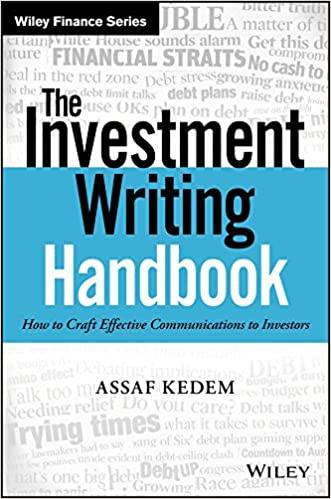
The data associated with this part of the case can be found in two tabs, "Part 2 (wholesale)" and "Part 2 (revenue sharing)." of the spreadsheet associated with this case. It refers to the simulations carried out on the phone charger described in the case, which costs $2.50 to produce and retails for $10 (both prices are included in the spreadsheet). The file also contains simulated demand realizations for 300 months. First, assume that there is no salvage value for the phone chargers at the end of each month. 1. We consider and simulate the supply chain under a wholesale price contract. As mentioned, we use a retail price of $10, a unit production cost of $2.50, and a (monthly) demand that is normally distributed with mean 1,000 and standard deviation 200. The demand realizations are given in the spreadsheet. a. Under a wholesale price of $5, what is the retailer's optimal order quantity? b. Under a wholesale price of $5, compute the expected profit of the retailer and of the supplier. c. Vary the value of the wholesale price between $2.50 and $10 and find the value that yields the highest possible profit for the supplier. What is this wholesale price value? d. For the wholesale price value obtained in Part 1c, what is the total expected profit of the supply chain (i.e./ the sum of the retailer's profit and the supplier's profit)? Production cost $ 2.50 $ 10.00 Wholesale price Ordering data Wholesale contract Centre Supply Chain Average Retailer Pront Supplier Profit Total supply chain profit Total supply chain Onder Quantity Purchase Sales Sales Resort Order notales Sav Totally the Demand 912 868 1547 124 1100 964 205 1150 1307 740 1111 The data associated with this part of the case can be found in two tabs, "Part 2 (wholesale)" and "Part 2 (revenue sharing)." of the spreadsheet associated with this case. It refers to the simulations carried out on the phone charger described in the case, which costs $2.50 to produce and retails for $10 (both prices are included in the spreadsheet). The file also contains simulated demand realizations for 300 months. First, assume that there is no salvage value for the phone chargers at the end of each month. 1. We consider and simulate the supply chain under a wholesale price contract. As mentioned, we use a retail price of $10, a unit production cost of $2.50, and a (monthly) demand that is normally distributed with mean 1,000 and standard deviation 200. The demand realizations are given in the spreadsheet. a. Under a wholesale price of $5, what is the retailer's optimal order quantity? b. Under a wholesale price of $5, compute the expected profit of the retailer and of the supplier. c. Vary the value of the wholesale price between $2.50 and $10 and find the value that yields the highest possible profit for the supplier. What is this wholesale price value? d. For the wholesale price value obtained in Part 1c, what is the total expected profit of the supply chain (i.e./ the sum of the retailer's profit and the supplier's profit)? Production cost $ 2.50 $ 10.00 Wholesale price Ordering data Wholesale contract Centre Supply Chain Average Retailer Pront Supplier Profit Total supply chain profit Total supply chain Onder Quantity Purchase Sales Sales Resort Order notales Sav Totally the Demand 912 868 1547 124 1100 964 205 1150 1307 740 1111








